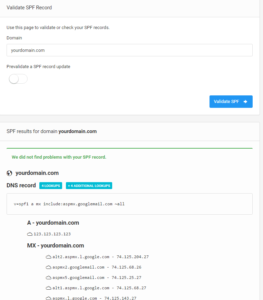DMARC Record Policy
If you want to learn how to find errors in a DMARC record, keep reading. We’ll cover some of the most common DMARC errors and how to fix them. This article will guide you through the process step-by-step. You’ll learn how to use a DMARC record checker to find errors, and we’ll also discuss a few other important DMARC issues.
5.7.5 permanent error evaluating dmarc policy
DMARC is an email authentication and reporting protocol that helps senders prevent email impersonation. It works by letting the recipients know that a message is protected and provides instructions on how to handle it if it doesn’t pass authentication. There are a number of ways to use DMARC. Here are a few of the most common ones:

DMARC analyzes feedback loop reports and develops a strict authentication protocol that instructs ISPs to reject fraudulent emails. DMARC is essential because over 90% of network attacks use email infrastructure. Phishing attacks can ruin an ISP’s reputation, deliverability rates, and brand reputation. By using DMARC, you can avoid problems like these by following best practices. If you haven’t yet done so, start by checking your DMARC record.
How To Find Errors In A DMARC Record Policy
When you’re setting up your DMARC record policy, be sure to check that it’s valid. There’s a free DMARC record check tool available online that allows you to test your DMARC record and evaluate the options available to you. Try the DMARC record checker to see if you’ve set up DMARC correctly for your domain. And don’t forget to use a DMARC record checker to check your DNS records for errors.
DMARC requires that you set up an email authentication record. It also requires that you align the domain, return-path, and From-address fields. DMARC is an effective tool for protecting your email account from phishing emails. It’s not difficult to make your email campaign DMARC-compliant. However, if you’re not using the proper email authentication record, you might be at risk of having your email go into a spam folder or be rejected.
Before DMARC was implemented, authenticating email messages was difficult. Earlier, organizations tried to filter out spam, malware, and phishing. But these efforts failed to detect genuine emails. Today, a DMARC record contains a list of rulesets and domain owner policy. It protects your email from email compromise attacks, phishing emails, and other cyber threats.
In order to fix the issue, you’ll need to check the DMARC record. If it’s not valid, try using a DNS checker. Try entering your domain into the check MX page on Google’s Admin Toolbox. Using this tool, you can check the DMARC SPF record. The domain must match the authentication method, or else it won’t work.